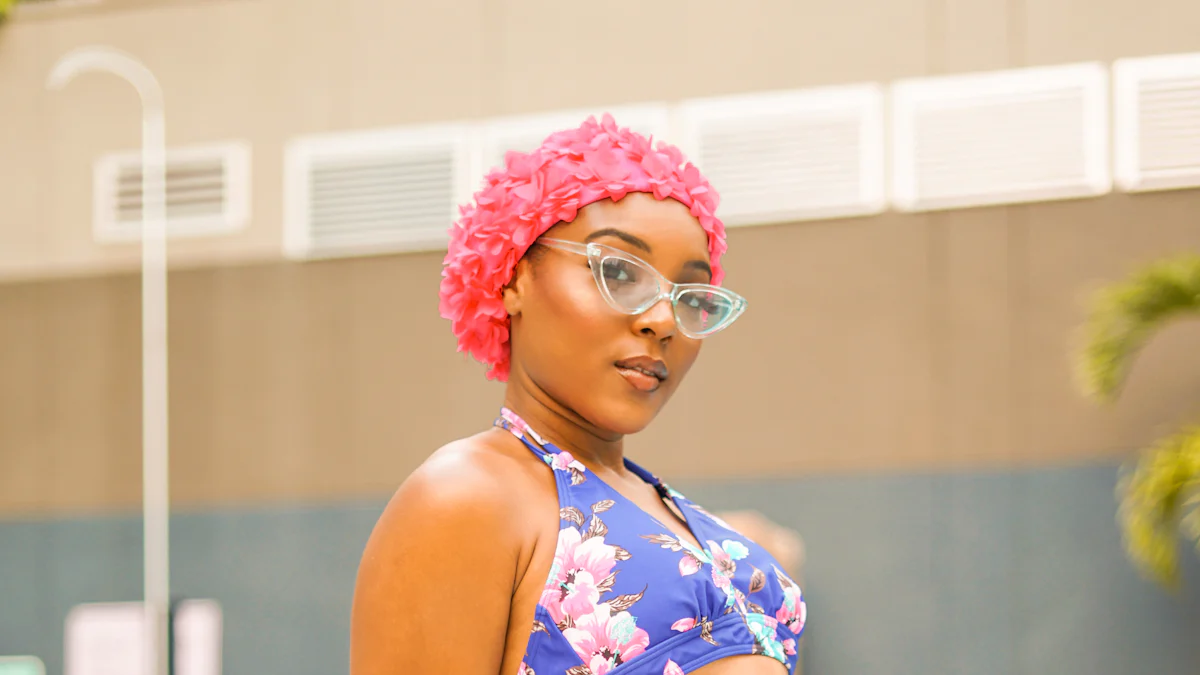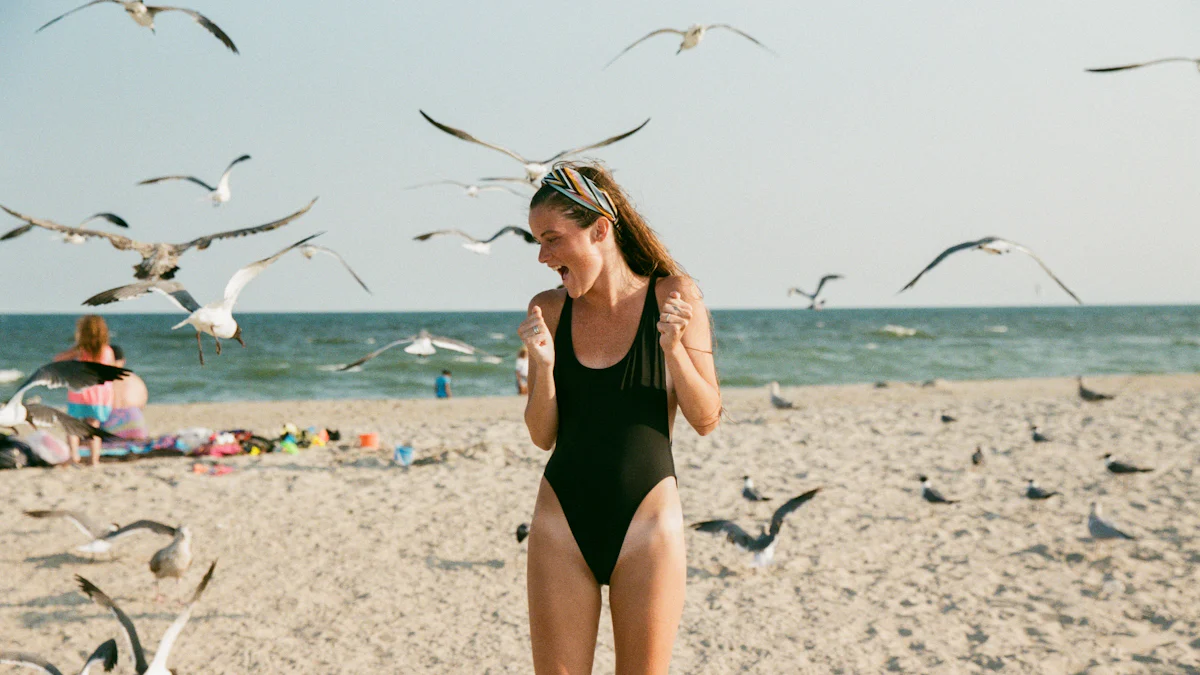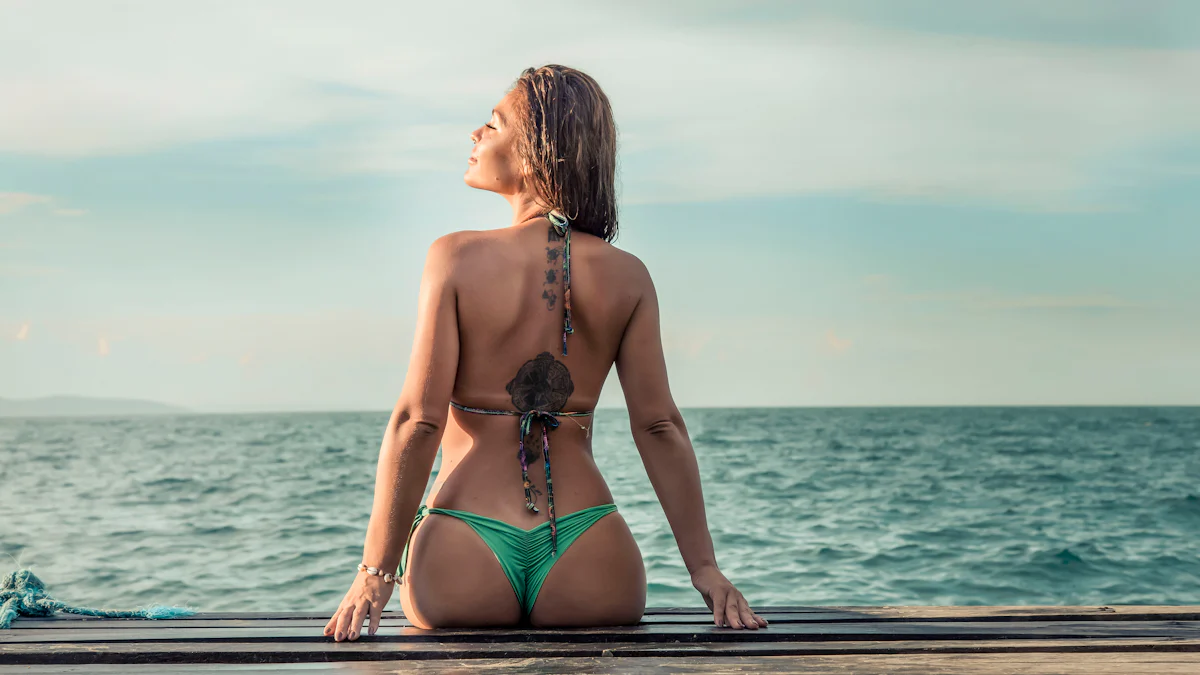
Choosing the right production strategy for your swimwear business can shape your success. Bulk Swimwear Purchasing offers cost efficiency by reducing the price per unit, making it ideal for businesses with high demand. On the other hand, small-batch customization allows you to create unique designs tailored to niche markets, helping your brand stand out. Tideline Swimwear supports both approaches, offering solutions that cater to your specific needs. Whether you prioritize affordability or exclusivity, their expertise ensures a seamless design and production process.
Key Takeaways
Bulk Swimwear Purchasing is cost-effective, making it ideal for businesses with high demand, as it reduces the price per unit through economies of scale.
Small-Batch Customization allows for unique designs tailored to niche markets, helping brands stand out and cater to specific customer preferences.
Effective inventory management is crucial; bulk purchasing can lead to overstocking, while small-batch production minimizes waste and aligns with current trends.
Sustainability is a growing concern; small-batch customization supports eco-friendly practices by reducing waste and promoting ethical production.
Speed and time-to-market differ between the two methods; bulk purchasing offers quicker fulfillment, while small-batch customization allows for rapid adaptation to market changes.
Evaluate your business goals and target audience to choose the right approach—prioritize cost efficiency with bulk purchasing or uniqueness with small-batch customization.
Consider partnering with experts like Tideline Swimwear to find tailored solutions that meet your specific production needs.
Cost Considerations
When deciding between Bulk Swimwear Purchasing and Small-Batch Customization, understanding the cost implications is crucial. Each approach offers distinct financial advantages and challenges that can impact your business strategy.
Bulk Swimwear Purchasing
Bulk Swimwear Purchasing provides significant cost savings by leveraging economies of scale. Manufacturers often offer discounted rates for larger orders, which reduces the cost per unit. This approach works well for businesses with consistent demand or those aiming to stock inventory quickly. For example:
Lower production costs: Ordering in bulk minimizes manufacturing expenses, as the setup costs are spread across a larger quantity of items.
Discounted pricing: Many suppliers provide tiered pricing, where higher order volumes lead to lower prices per unit.
Efficient sales processes: With a ready supply of swimwear, you can fulfill customer orders promptly, improving overall operational efficiency.
However, bulk purchasing requires a higher upfront investment. You must also ensure that your inventory aligns with market trends to avoid overstocking outdated designs.
Small-Batch Customization
Small-Batch Customization focuses on creating unique, tailored swimwear designs. While this approach involves higher costs per unit, it offers unmatched flexibility and exclusivity. Key benefits include:
Personalized designs: You can cater to niche markets by offering swimwear that reflects specific customer preferences.
Reduced risk of overstocking: Producing smaller quantities allows you to test new designs without committing to large inventories.
Brand differentiation: Unique products help your business stand out in a competitive market.
The downside lies in the higher production costs. Customization often requires specialized materials and additional labor, which increases the price per unit. Despite this, the ability to offer exclusive designs can justify the premium pricing for many customers.
"Bulk purchasing reduces costs through discounts for larger orders, while small-batch customization increases costs for unique designs." This distinction highlights the trade-off between affordability and exclusivity.
By evaluating your budget, target audience, and business goals, you can determine which approach aligns best with your needs.
Customization and Design Flexibility

Customization and design flexibility play a pivotal role in shaping your swimwear business. The ability to adapt designs to meet customer preferences can set your brand apart in a competitive market. Let’s explore how Bulk Swimwear Purchasing and Small-Batch Customization differ in this aspect.
Bulk Swimwear Purchasing
Bulk Swimwear Purchasing offers limited customization options. Manufacturers often provide pre-designed templates or a selection of colors and patterns. While this approach may not allow for intricate personalization, it ensures consistency across large quantities. This works well for businesses targeting a broad audience with standard designs.
Streamlined production: Bulk orders rely on established designs, reducing the time spent on customization.
Cost-effective options: Minor adjustments, such as color changes, can be made without significantly increasing costs.
Market-tested designs: Manufacturers often use popular, proven styles that appeal to a wide range of customers.
However, this approach may not suit brands aiming to cater to niche markets or those seeking to offer unique products. The lack of design flexibility can limit your ability to differentiate your brand.
"Bulk Swimwear Purchasing prioritizes efficiency over individuality, making it ideal for businesses focused on mass appeal."
Small-Batch Customization
Small-Batch Customization excels in offering unparalleled design flexibility. This approach allows you to create swimwear tailored to specific customer needs or market trends. Whether you want to experiment with bold patterns, eco-friendly materials, or inclusive sizing, small-batch production makes it possible.
Unique designs: You can craft swimwear that reflects your brand’s identity and caters to niche audiences.
Adaptability: Small batches enable you to tweak designs between production runs based on customer feedback.
Personalized offerings: Customization options, such as adding logos or unique prints, enhance the exclusivity of your products.
For example, a swimwear brand targeting luxury markets can use small-batch production to create high-end, limited-edition collections. This approach not only attracts attention but also builds a loyal customer base. However, the higher costs associated with customization may require careful pricing strategies to maintain profitability.
"Small-Batch Customization empowers you to innovate and adapt, making it perfect for brands seeking to stand out."
By understanding your target audience and business goals, you can decide whether to prioritize efficiency or individuality in your swimwear designs.
Inventory Management Challenges
Managing inventory effectively is a critical aspect of running a successful swimwear business. Your approach to inventory management will vary significantly depending on whether you choose Bulk Swimwear Purchasing or Small-Batch Customization. Each method presents unique challenges and opportunities that can impact your operations.
Bulk Swimwear Purchasing
Bulk Swimwear Purchasing simplifies inventory management in some ways but introduces its own set of challenges. When you order in bulk, you receive a large quantity of products at once, which requires careful planning and storage.
Storage requirements: Bulk orders demand significant storage space. You need to ensure your facilities can accommodate the volume without compromising product quality.
Risk of overstocking: Ordering large quantities increases the risk of holding excess inventory. If market trends shift or demand decreases, you may struggle to sell outdated designs.
Cost efficiency: While bulk purchasing reduces the cost per unit, it ties up capital in unsold inventory. This can limit your ability to invest in other areas of your business.
"Effective inventory management helps maintain optimal stock levels, reducing the risks of holding excess inventory or running out of critical raw materials." This principle is especially relevant when dealing with large orders.
To mitigate these challenges, you should analyze market trends and customer preferences before placing bulk orders. Accurate forecasting can help you avoid overstocking and ensure your inventory aligns with current demand.
Small-Batch Customization
Small-Batch Customization offers greater flexibility in inventory management but comes with its own complexities. By producing smaller quantities, you can adapt quickly to market trends and reduce waste.
Reduced storage needs: Smaller production runs require less storage space, making it easier to manage your inventory.
Lower risk of unsold stock: Limited quantities allow you to test new designs without committing to large inventories. This minimizes the financial impact of slow-moving products.
Quick response to trends: Small batches enable you to adjust your offerings based on customer feedback or emerging trends, keeping your brand relevant.
However, this approach can involve higher logistical costs. Frequent production runs may increase expenses related to shipping and manufacturing setup. Despite these challenges, small-batch production supports sustainable practices by reducing waste and promoting efficient resource use.
"By deliberately producing in limited quantities, the company aims to reduce waste and minimize environmental impact." This strategy aligns with the growing consumer demand for eco-friendly products.
To succeed with small-batch customization, you should focus on precise demand forecasting and efficient production scheduling. These practices will help you balance flexibility with cost control.
Sustainability and Environmental Impact

Bulk Swimwear Purchasing
Bulk swimwear purchasing often prioritizes efficiency over sustainability. Large-scale production typically uses standardized processes that may not focus on minimizing environmental harm. This approach can lead to significant waste, especially if unsold inventory becomes obsolete due to shifting trends.
Resource consumption: Bulk manufacturing requires substantial raw materials, energy, and water. These resources are often used without optimization, increasing the environmental footprint.
Overproduction risks: Producing large quantities increases the likelihood of excess inventory. Unsold items may end up in landfills, contributing to waste and pollution.
Limited eco-friendly options: Many bulk manufacturers prioritize cost reduction over sustainable practices. This can result in the use of non-recyclable materials or harmful chemicals.
While bulk purchasing offers cost advantages, it may conflict with your brand’s commitment to sustainability. If you aim to align with eco-conscious consumers, this approach might require additional efforts, such as partnering with manufacturers who adopt greener practices.
"Mass production often sacrifices sustainability for efficiency, creating challenges for businesses striving to reduce their environmental impact."
Small-Batch Customization
Small-batch customization provides a more sustainable alternative by focusing on reducing waste and promoting ethical practices. This method allows you to produce only what is needed, avoiding the pitfalls of overproduction.
Waste reduction: Small batches minimize excess inventory. By producing limited quantities, you can prevent unsold stock from becoming waste.
Efficient resource use: Careful planning ensures that materials, energy, and labor are used effectively. This approach supports sustainability goals while maintaining high-quality standards.
Ethical production: Small-batch manufacturing often emphasizes fair labor practices and better working conditions. These values resonate with consumers who prioritize ethical brands.
For example, a swimwear brand using small-batch production can create eco-friendly collections with recycled fabrics or biodegradable materials. This not only reduces environmental impact but also appeals to environmentally conscious customers. However, higher costs per unit may require strategic pricing to balance profitability with sustainability.
"Small-batch customization aligns with sustainability by reducing waste, optimizing resources, and supporting ethical practices."
By adopting small-batch production, you can position your brand as a leader in sustainability. This approach helps you meet the growing demand for eco-friendly products while building trust with your audience.
Speed and Time-to-Market
Speed and time-to-market are critical factors in the swimwear industry. Your ability to deliver products quickly can determine how well you respond to customer demands and market trends. Both Bulk Swimwear Purchasing and Small-Batch Customization offer distinct advantages and challenges in this area.
Bulk Swimwear Purchasing
Bulk Swimwear Purchasing excels in delivering products quickly when you need to stock inventory for high-demand periods. Manufacturers often rely on streamlined processes and standardized designs, which reduce production time. This approach works well if your business requires large quantities of swimwear within a short timeframe.
Faster production cycles: Bulk orders benefit from efficient manufacturing systems designed for high-volume output.
Readiness for peak seasons: You can prepare for busy periods, such as summer or holiday sales, by stocking up in advance.
Predictable timelines: Established production methods ensure consistent delivery schedules, helping you plan your operations effectively.
However, the reliance on pre-designed templates limits your ability to adapt quickly to changing trends. If market preferences shift, you may face delays in introducing new designs. This approach suits businesses prioritizing speed over flexibility.
"Mass production emphasizes cost efficiency and high demand standard items, making it ideal for businesses focused on quick inventory turnover."
Small-Batch Customization
Small-Batch Customization offers greater adaptability but may involve longer production times. The focus on unique designs and craftsmanship requires more attention to detail, which can slow down the process. Despite this, small-batch production allows you to respond quickly to emerging trends and customer feedback.
Quick adaptation to trends: You can introduce new designs faster by producing smaller quantities and testing them in the market.
Reduced lead times for updates: Small batches enable you to make adjustments between production runs without significant delays.
Enhanced customer satisfaction: Offering personalized options creates a sense of exclusivity, which can strengthen customer loyalty.
The trade-off lies in the potential for production delays due to the complexity of customization. Higher design and development costs may also impact your time-to-market. However, this approach is ideal if your business values innovation and customer-centric offerings.
"Small batch production focuses on craftsmanship, quality, and quick adaptation to trends, making it perfect for brands seeking to stay ahead of the curve."
By evaluating your priorities, you can decide whether to prioritize speed with Bulk Swimwear Purchasing or flexibility with Small-Batch Customization. Both approaches offer unique benefits that can align with your business goals.
Choosing between bulk swimwear purchasing and small-batch customization depends on your business needs. Bulk purchasing offers cost efficiency and suits businesses with high demand for standard items. Small-batch customization provides flexibility and helps brands stand out with unique designs.
Your decision should align with your budget, target audience, and goals. Evaluate what matters most to your business—affordability or exclusivity.
"Mass production works best for cost efficiency, while small-batch customization excels in uniqueness."
Consider partnering with Tideline Swimwear for tailored solutions that meet your specific requirements.
FAQ
What is the minimum order quantity for custom swimwear?
The minimum order quantity depends on the production method. For bulk swimwear purchasing, manufacturers often require a minimum of 50 pieces, allowing you to mix designs, colors, and sizes. Small-batch customization typically has higher minimums, sometimes starting at 300 pieces, due to the specialized nature of the process.
Can I create my own swimwear designs?
Yes, you can design your own swimwear. Many platforms, like Printify, offer print-on-demand services where you can upload your designs and produce swimwear as orders come in. This approach allows you to test new ideas without committing to large inventories.
How much does it cost to make a custom swimsuit?
Custom swimsuits are more expensive than mass-produced options. Costs include design fees, fabric, labor, and sometimes shipping. A single custom swimsuit can range from $80 to several hundred dollars, depending on the complexity of the design and the materials used.
Is small-batch customization suitable for startups?
Small-batch customization works well for startups aiming to test the market or target niche audiences. It allows you to produce limited quantities, reducing the risk of overstocking. However, the higher cost per unit may require careful budgeting.
Does bulk swimwear purchasing offer design flexibility?
Bulk purchasing provides limited design flexibility. Manufacturers often use pre-designed templates or standard styles. While you can make minor adjustments, such as color changes, intricate customizations are usually not feasible in bulk production.
How can I ensure sustainability in swimwear production?
To prioritize sustainability, consider small-batch customization. This method reduces waste by producing only what you need. You can also choose eco-friendly materials, such as recycled fabrics, and partner with manufacturers who follow ethical practices.
What sizes are available for custom swimwear?
Custom swimwear can cater to a wide range of sizes, from extra small to plus sizes. Small-batch customization offers the flexibility to include inclusive sizing, ensuring your products meet diverse customer needs.
How long does it take to produce swimwear?
Production times vary based on the method. Bulk swimwear purchasing benefits from streamlined processes, often resulting in faster turnaround times. Small-batch customization, focusing on unique designs, may take longer due to the attention to detail required.
Can I test new designs without committing to large orders?
Yes, small-batch customization is ideal for testing new designs. By producing smaller quantities, you can gauge customer interest and adjust your offerings before scaling up production.
What factors should I consider when choosing between bulk purchasing and small-batch customization?
You should evaluate your budget, target audience, and business goals. Bulk purchasing suits businesses with high demand and a focus on cost efficiency. Small-batch customization works better for brands prioritizing uniqueness and catering to niche markets.
